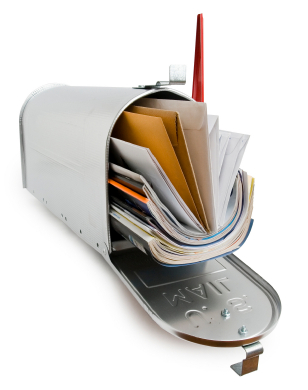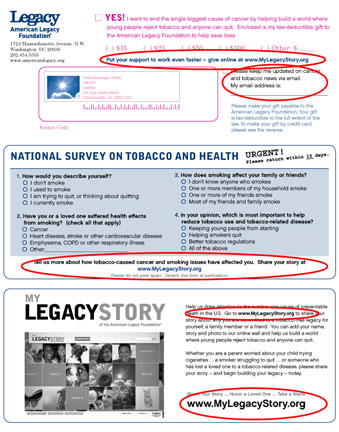 Let me just begin by clearing something up. Direct mail fundraising is not dead. (Here’s a nice article from Mal Warwick by the way on why.) In fact, for the vast majority of nonprofits, direct mail is still the most powerful, cost effective means of constituent engagement and giving.
Let me just begin by clearing something up. Direct mail fundraising is not dead. (Here’s a nice article from Mal Warwick by the way on why.) In fact, for the vast majority of nonprofits, direct mail is still the most powerful, cost effective means of constituent engagement and giving.But how we’re using direct mail as a tool for fundraising and membership development is changing. And it will continue to evolve as the ways in which people communicate and get information does.
So what’s different? For starters, direct mail isn’t the only point of entry for new members to your organization any more. Prospecting used to go like this: prospect gets mail piece, prospect makes gift, prospect becomes donor. Today, donors are discovering and engaging with organizations online in a variety of ways. And so prospecting programs, previously expressed on a spreadsheet in terms of mail out and donors in, have to accommodate more layers now.
In programs where we used to be able to draw a direct line from prospect to donor, thanks to the web and evolving electronic channels for engagement, we now have an interesting new state of involvement between prospect and donor: that of the action-taker. By action-taker, I mean a person who hasn’t yet made a gift, but who has engaged with an organization by signing a petition or responding to a survey or sharing online in any number of ways, like telling their story, posting a picture, being a fan or making a comment.

Encouraging donors via direct mail to engage and give online
For all the ways direct mail is changing in the digital age, it’s also still the same in quite a few. At a time when 140 characters passes as communication, it’s especially nice to know that longer letters still often do better.








I *think* to conclude that while communications are becoming shorter and more prevalent that longer letters still often do better seems to undercut the whole of your blog post, Moira. I’ve read a few different articles that say that while online givers do often give larger gifts–chalk that up to the impulsiveness of online giving?–they also have a lower likelihood of giving again or increasing online. The best way to retain, cultivate and increase their donations is usually through the integrated direct mail they receive afterward. Would it be fairer to say that a wholly integrated fundraising communications plan–that includes direct mail–is often better than a simple shot in the dark?
Thanks for your comments Dustin – I agree. The bottom line is multi-channel and integration. To me, it’s not a competition between direct mail and online (“Online gifts are higher! But wait, online donors don’t stick around the way dm donors do!”)
What we really want to do is get donors giving and engaging in BOTH, because that translates to a more committed donor, would you agree? And so I see direct mail still changing to make way for and mesh with em/web in order to fully leverage ALL the media in order to build deeper relationships with our donors.
One more thing. I need your tshirt size. 🙂 (Email me.) Thanks for being the first to comment and for your great comments!
Yep, I agree. I think the “Part 2” of this post could address the question of effective evaluation of a communications strategy. Awhile ago, we just divided the gifts we received from dm by the number we sent out. How do we factor in Facebook, Twitter, website traffic, WOM, email, etc.? And, go. 🙂
I’ll email you soon!
We’ll get right on that! Our friend Todd Tweedy @audiencemachine needs to join this conversation.
Thanks for the invite Moira!
A few thoughts….
1. This isn’t an all or nothing game. And, an “wholly integrated” campaign can’t simply be multiple waves of direct mail. I believe multi-channel touch points need to be incorporated into corporate giving/fundraising programs. Perhaps awareness and information sharing via DM efforts with email communications as dialog triggering tool to stimulate site visits as well as for scheduling calls with legacy donors. My point is that I believe many associations may be relying on a single channel of communication. That’s a mistake.
2. Expanding the interactive presence of any organization means expanding our measurement horizons. Don’t get me wrong; ROI is critical but measuring other desired behaviors beyond conversion rates for the small percentage of individuals giving donations is needed especially as we evaluate the effectiveness of social network profiles on Twitter or Facebook as well as the value of blogging for that matter. For example, what are associations measuring when they aren’t asking for money? Part of this measurement horizon expansion is assessing content consumption and distribution of site visitors. This process is likely to expand how associations redefine supporters. A “new” supporter may simply be an individual who has voiced a viewpoint that is shared by the association and can be used as content to distribute and syndicate to engage larger audiences.
Thanks for the invite and the opportunity to share. Looking forward to more dialog….
Best,